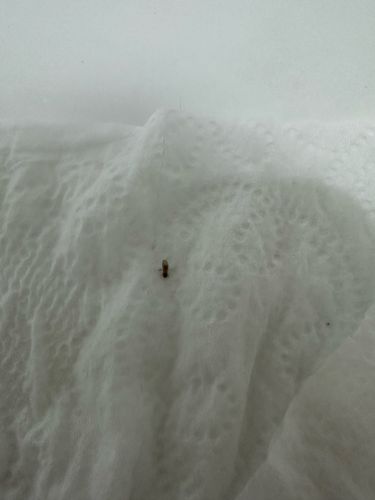Booklouse (might also be a louse or a mite due to image clarity)
Scientific Name: Likely of the order Psocoptera (booklice) or Phthiraptera (lice), or Acari (mites)
Order & Family: Psocoptera (booklice) or Phthiraptera (lice) or Acari (mites)
Size: Typically 1-2 mm, though some can be smaller or slightly larger.

Natural Habitat
Damp, warm, and dark environments, often found in books, stored food, wallpaper, crevices, or on animal hosts (for lice/mites).
Diet & Feeding
Booklice typically feed on mold, fungi, starch-based materials (like book bindings, wallpaper paste), flour, and grains. Lice and mites are parasitic and feed on blood, skin flakes, or other bodily fluids of their hosts.
Behavior Patterns
Booklice are generally harmless scavengers, thriving in humid conditions. They are often active in the dark. Lice and mites are parasitic and spend their entire life cycle on a host, causing itching and irritation.
Risks & Benefits
Booklice are generally harmless to humans but can be considered a nuisance if present in large numbers, potentially damaging books or stored food. They can sometimes trigger allergies in sensitive individuals. Lice and mites are parasites that can cause skin irritation, infestations (e.g., head lice, scabies), and in some cases, transmit diseases. There are typically no direct benefits to humans, though some free-living mites play a role in decomposition.
Identified on: 11/9/2025